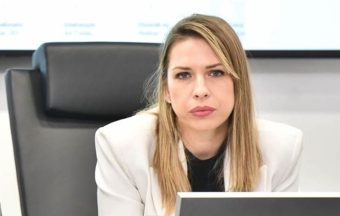Countries in the region are making significant strides in implementing a circular economy (CE), which is vital for reducing dependence on primary resources, boosting competitiveness, and protecting the environment. We spoke with Milena Rmuš, Secretary of the Coordinating Committee for Energy Efficiency and Environmental Protection at the Chamber of Commerce of Montenegro, about how the country gradually embraces circular principles, tackles specific challenges, and develops key strategies and initiatives to achieve sustainable development.
Q: How would you describe Montenegro’s progress in transitioning to a circular economy? What are the key challenges, and what has been the most significant achievement so far? What are the focus areas?
A: Montenegro has made some progress in transitioning to a circular economy, but it still faces a series of structural challenges that slow down its implementation. Aligning with European regulations provides a framework for further reforms, but the fundamental transformation of the economic system and business models is happening gradually.

The main obstacles include underdeveloped waste management and recycling infrastructure, while the capacity for processing secondary raw materials is limited. This makes closing material loops difficult and increases dependence on imported primary resources. Additionally, Montenegro generates a significant amount of municipal waste, most of which ends up in landfills, with recycling rates remaining below the European average.
Financial constraints, particularly for small and medium-sized enterprises, hinder the adoption of circular business models. Incentive mechanisms and access to green financing are at a very low level. Furthermore, awareness among businesses and citizens about the benefits of circular transition is still unsatisfactory. A lack of education, limited access to information, and weak promotion of CE contribute to this issue. Targeting campaigns and integrating CE principles into educational programmes are essential to overcome this challenge.
Despite these challenges, Montenegro has made progress by improving the legislative framework in waste management, energy efficiency, and emissions reduction, laying the foundation for further CE development. Additionally, active regional cooperation within the Green Agenda for the Western Balkans has enabled knowledge and experience exchange.
The key focus areas for CE in Montenegro include sectors with high potential for circular practices, as well as horizontal policies that support the efficient integration of circular principles into economic flows. Given the specific characteristics of the national economy, particular attention and action are required in the agriculture, tourism, and construction sectors.
Tourism contributes significantly to GDP but generates large amounts of waste, resource consumption, and CO2 emissions. In recent years, sustainability initiatives have improved the reputation of tourist destinations and attracted more visitors, while hotels have obtained prestigious Green Key certifications. The tourism sector has become an essential driver of the circular economy by introducing innovative technologies for resource monitoring and optimization and using renewable energy sources.
Furthermore, the agri-food sector holds excellent potential for circular solutions, especially given Montenegro’s high dependence on imported food products and raw materials. The focus is on producing organic, local, and healthy food using environmentally friendly practices and valorising bio-waste.
The construction sector in Montenegro faces challenges related to high CO2 emissions, low energy efficiency of buildings, and unstructured management of construction waste. This makes further efforts necessary for the implementation of sustainable construction practices.
IN FOCUS:
- First DC Chargers in Cities Across Serbia
- Naled Advocates For More Efficient Municipal Waste Management in 2025
- BiH on the Path to a Circular Economy
Q: How would you assess the importance of Montenegro’s 2022 Circular Economy Roadmap and the National Circular Economy Strategy until 2030?
A: Montenegro’s Circular Economy Roadmap from 2022 is the first document to create a framework for integrating circular principles into economic, regulatory, and institutional processes and aligning them with EU policies. Its implementation helps reduce reliance on imported raw materials, develop the secondary raw materials market, create an enabling regulatory environment, and strengthen economic competitiveness.
The document provides guidelines for priority sectors and outlines further steps, emphasizing public policies and business models. Sector-specific and local roadmaps that precisely identify challenges and opportunities within specific industries and regions are essential to enhancing CE implementation.
Based on the recommendations from the Roadmap, the Government of Montenegro in 2022 adopted the National Circular Economy Strategy until 2030, together with the Action Plan for 2023-2024. This comprehensive framework integrates CE into national development policies, redefines resource policy, industrial production, and waste management, and aims to create a resilient, competitive, and economically sustainable system. The action plans define concrete measures and resource allocation to ensure the transition is measurable, adaptable, and aligned with market and regulatory changes. The strategy identifies key sectors for the application of circular principles, including the agri-food, forestry, construction, and tourism sectors, while strengthening horizontal policies in the areas of education, innovation, and energy efficiency.
Interview by Katarina Vuinac
The inteview was published in the Energy portal Magazine CIRCULAR ECONOMY



